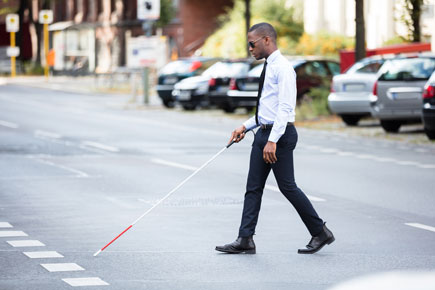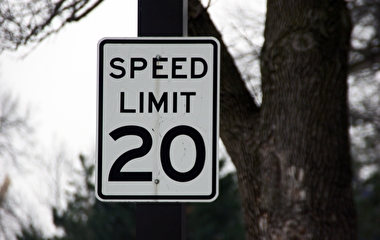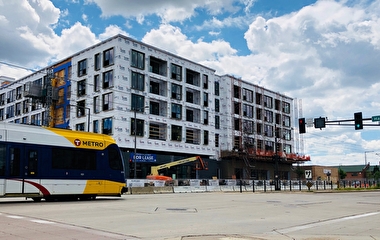An estimated 26.9 million American adults have some type of visual impairment, from “trouble seeing” to complete blindness, according to a 2017 National Health Interview Survey. With the aging Baby Boomer generation, this population is expected to grow.
After receiving orientation and mobility training, people with vision impairment can usually travel independently to known places along familiar routes by relying on a white cane or a guide dog to avoid obstacles. However, neither of these provides spatial awareness along their path (information to help them perceive the presence of a work zone, traffic intersection, bus stop, or subway entrance, for example) or guidance information to a destination.
Understandably, traveling alone in an unfamiliar environment is often a challenge. “Every day it’s a new experience,” says Ken Rodgers, president of the American Council of the Blind in Minnesota. “I never know what I’m going to encounter exactly.”
For Chen-Fu Liao, a senior research associate in the U of M’s Department of Mechanical Engineering, technology offers the potential to revolutionize the way people with vision impairment navigate city streets. In previous work, Liao developed the Mobile Accessible Pedestrian System (MAPS), which uses smartphone technology to provide location, signal timing, and work-zone information to visually impaired pedestrians. Developed in collaboration with Minnesota’s Vision Loss Resources, MAPS received positive feedback from testers. However, Liao discovered the technology was not acceptably reliable in GPS-unfriendly areas.
In his latest project, sponsored by the Roadway Safety Institute, Liao is aiming to improve the app’s accuracy and reliability by developing a “self-aware” infrastructure—one that can monitor itself and ensure the information it’s providing is up to date, even in urban canyons or indoor environments. To that end, Liao and his team have developed a standalone Bluetooth Low Energy (BLE) smart system integrating commercial off-the-shelf BLE beacons.
First, the researchers integrated the beacons with the necessary interface elements to sense other BLE devices within their range, Liao explains. The BLE beacons can be attached to traffic signal poles, work-zone barrels, or other objects and placed at decision points such as bus stops or building entrances. Then, using a positioning and mapping algorithm, the system can estimate a user’s location based on nearby Bluetooth signals, share information among devices, and inform the system administrator if any beacon location has changed. A database containing the location and message of each device is then integrated with the smartphone app to provide navigation information.
“This mapping methodology will ensure that correct audio information is provided to app users at the right location,” Liao says. “It could be used anywhere—at traffic intersections, skyways, or underground tunnels—to provide directions for travelers.”
Results of testing in a variety of environments indicate that the system can successfully detect if the location of one or multiple BLE beacons in a network has changed and detect when any of its beacons are not functioning—resulting from a loss of power or vandalism, for example.
Liao has received additional funding from the Minnesota Department of Transportation to deploy the system at six intersections in Stillwater, MN, in the summer of 2019. Researchers will integrate the Bluetooth system with the smartphone app and then conduct real-world tests of the new technology. The University of Minnesota has also filed a provisional patent on the technology.
“The benefit of our approach is that the visually impaired need nothing more than a smartphone with a text-to-speech capability to receive traffic and location information,” Liao says.
“The intent of our assistive system is not to undermine the skills and strategies that people with vision impairment have learned for navigation and wayfinding,” Liao adds. “Instead, the system aims to support their wayfinding capability, extend mobility and accessibility, and improve safety.”



